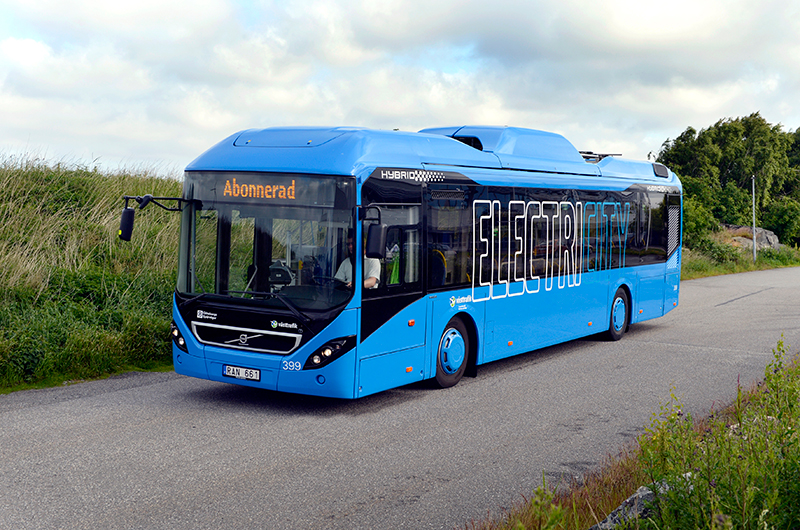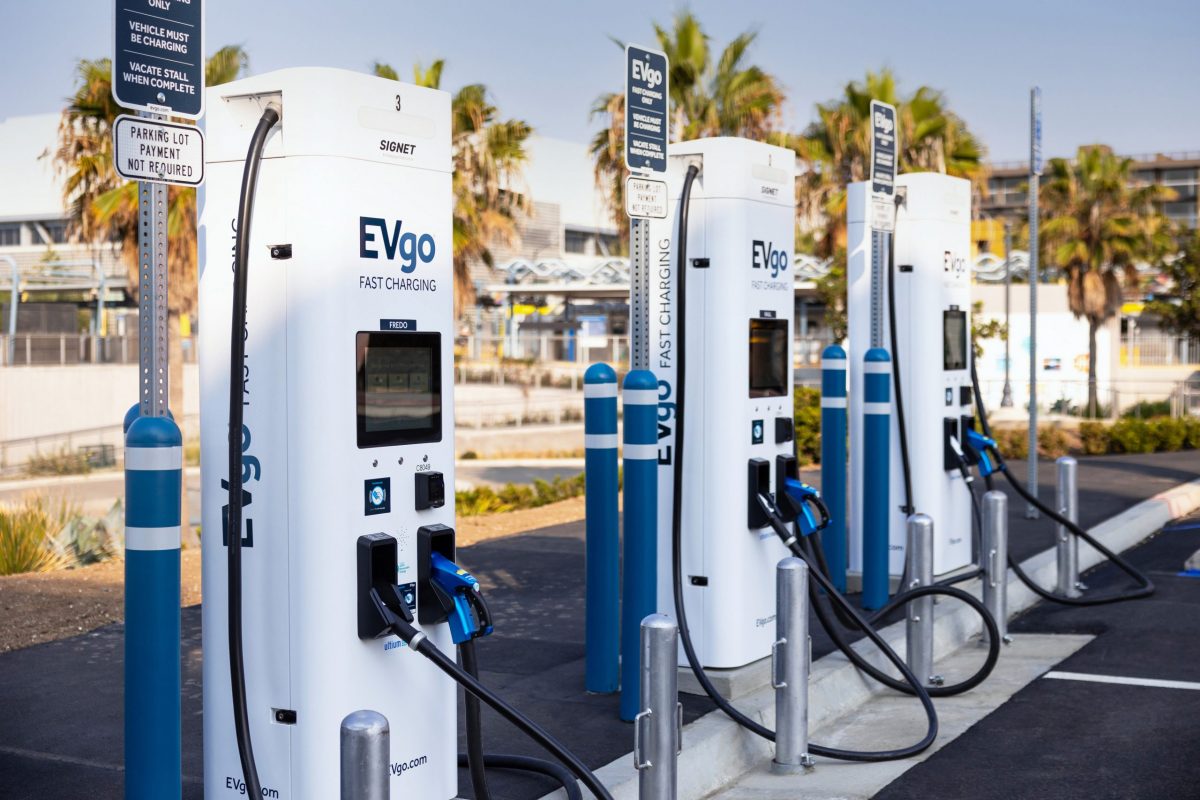Under pressure to meet ever more stringent emissions standards, transport operators are faced with a range of low carbon bus options. In most major cities, electric, hybrid, or other low carbon buses have been deployed, including New York, London, and Sao Paulo. Government funding has helped fuel an increase in the adoption of alternative powertrain buses, but as the upfront cost of such vehicles is higher than traditionally-powered buses, the additional costs need to be offset through government incentives, or by achieving high operational savings. Electric and hybrid buses offer environmental benefits, a quieter ride, fuel savings, and energy security benefits, but in many cases, it is the public users that see these benefits, rather than the fleet operators, making the vehicles a difficult sell.
In the UK, a recent report by the UK’s Low Carbon Vehicle Partnership (LowCVP), a not-for-profit public-private partnership, evaluated the incentives needed to increase the growth of low carbon bus sales. “In the case of electric buses, a drop in price of lithium-ion battery production will certainly reduce the upfront cost, and therefore the payback time, encouraging increased sales,” Gloria Esposito, Head of Projects, LowCVP told Megatrends. “Concerns over battery durability and replacement costs need to be addressed in order to increase operator confidence in electric buses. Innovations in charging infrastructure, such as inductive charging, will have a role to play in making electric buses more mainstream.” This, says Esposito, is because inductive charging will enable electric buses to have a quick ‘top up charge’ en route, thereby facilitating a longer range during their daily operation. “This will improve the economic case through raising their utility value, and lead to larger reductions in fuel cost compared to diesel buses.” Esposito is keen to emphasise that this would affect electric bus sales not just in the UK, but worldwide.
Around the world
China is a very important market for the electric bus industry. It was only in 1994 that the Chinese government began to encourage private car ownership for its citizens, so public transport developed rapidly. There are around 1.5 million buses in operation in China today, with a mandate that they can only be on the road for eight years. This equates to a changeover market of around 190,000 buses every year in China, without taking into account any growth. Today, only 6% of the population owns a vehicle. The figure is growing, but 94% of 1.6 billion people still need to move around, and they do this by bus. If the market continues to be flooded with gasoline and diesel vehicles, the smog and pollution situation in China will continue to worsen. Health is now becoming a factor in energy policy, and China is finally trying to change, despite being the largest consumer of oil. A spokesperson for ZF told Megatrends, “Electrification of the bus driveline has a high market potential wherever the “obstacle” of the relatively high purchasing costs of a purely electric or hybrid bus is compensated by legal provisions. When announcing the 12th five-year-plan in 2011, the Chinese government too took a major step towards promoting the use of “Clean Energy Vehicles”. Due to the state subsidy programs, the registration numbers of electric buses are high.”
A recent announcement stipulated that starting in 2016, 20% of government vehicle purchases must have zero emission technology. Micheal Austin, Vice President of BYD America told Megatrends, “China is driving demand, at least in the government spend, towards zero emissions because of health care concerns. Government spend in China is huge. However, despite the increase in demand, the percentage of electric buses is still tiny.”
There is a similar situation in India. Like China, only 4-5% of the population owns a private vehicle, so once again around 1.3 billion people need to move around. Austin said, “China certainly is the big electric bus market, and the next one would be in the next emerging market, India.” India’s bus market is expected to remain strong, according to BYD. The Gujarat government recently announced plans to introduce a pilot project to run electric buses between Gandhinagar and Ahmedabad, inspired by Prime Minister Narendra Modi’s plan of implementing environmentally-friendly initiatives throughout India.

Austin said that South America is also a fast growing electric bus market. BYD has recently announced the opening of an electric bus factory in Sao Paulo, so its capacity in 2015 will be around 1,000 electric buses. “Our advantage is that we have the Chinese bus market to drive components and leverage. We have the Chinese bus market to drive manufacturing scale. That leverage in China gives us such an advantage all across the US to drive lower cost electrified platforms. I think it’s going to grow very quickly.”
Despite China’s important position in helping to drive electric bus sales, Europe’s infrastructure is already well developed. Austin said, “Europe’s infrastructure is fantastic but it doesn’t have the most fantastic products yet. We need to get more electric buses in Europe. Scale will drive pricing, which will benefit the entire market.” Nonetheless, hybrid bus uptake is expected to be slower than in the US or China, where market share is already considerable.
The move to electric
So what will persuade fleets to switch to electric buses? “The rising price of diesel is likely to be a key factor influencing bus operators to switch to low carbon fuels and electric powertrains,” said Esposito. “There also needs to be increased awareness of the operating performance, environmental and economic benefits of electric buses, evidenced by real world information from bus fleets who have adopted these vehicles. This will encourage bus operators to seriously consider these vehicles in their fleet renewals.” However, there are still barriers, including cost over conventional powertrains, uncertainty of operating performance, lack of infrastructure, and lack of incentives.
The recent announcement of Volvo and ABB’s partnership to supply hybrid and electric buses highlights that OEMs and suppliers are taking note of the anticipated growth. Jessica Sandström, Senior Vice President of City Mobility at Volvo Bus Corporation, told Megatrends, “The cooperation enables two industry leading companies in their respective fields to deliver complete, open standard, safe electrified bus solutions to cities with a potential to lower CO2, NOx, PM and noise emissions versus today’s diesel and gasoline. Volvo Bus brings the experience of some 1,600 hybrid buses in 21 countries. ABB has delivered over 1,500 DC fast charging systems for automotive, utility, government and retail customers.” The partnership’s first project will be to operate 12 Volvo Electric Hybrid buses in Luxembourg, with its first all-electric buses launching in June 2015 within the ElectriCity project in Sweden.
A report by Navigant Research highlighted that there is an increased interest in electric buses, and between 2012 and 2018, the market will increase at an annual rate of 26%. By 2018, it is expected that 75,000 electric buses will be on the roads. Navigant expects the Asia-Pacific market to see the highest growth, with 15,000 electric buses expected to be sold in 2018, accounting for 75% of sales. And as the cost comes down as numbers increase, Navigant expects emerging markets such as Latin America and Eastern Europe to significantly increase their demand.
There is huge potential to develop the electric and hybrid bus market around the world. Literally billions of people without access to private vehicles need to move around cities and countries, and there will be increasing pressure to achieve this with reduced or zero emissions in the future. As with passenger car EVs, there are barriers to overcome first, but if the benefits start to outweigh the limitations, the market could see a huge increase in sales.



